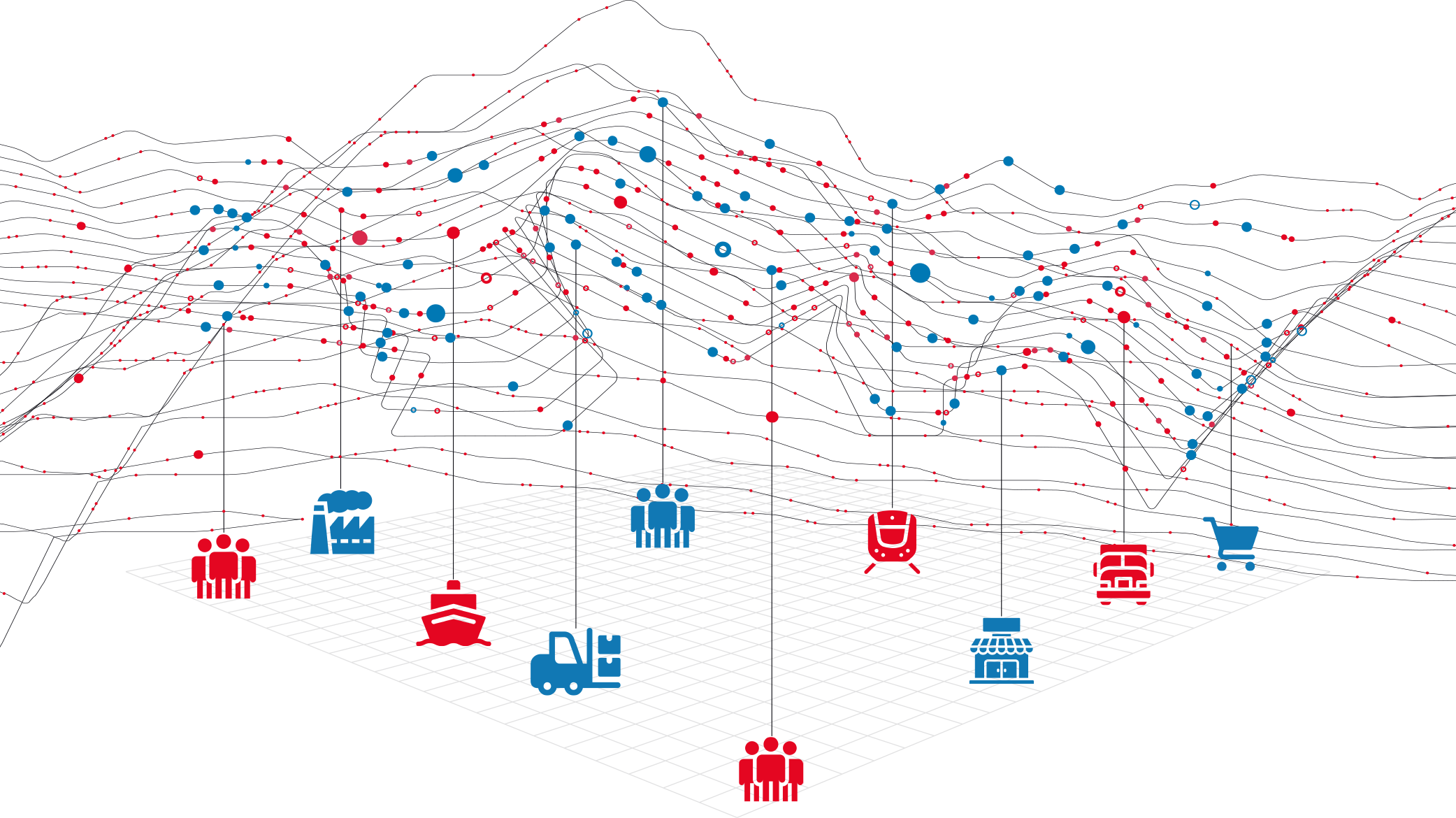Collaborative logistics
The complexity and interconnectedness of today's supply chains exposes companies to severe unforeseen impacts.
The ability to report anomalies to customers in a timely manner is therefore a priority; one must be able to handle disruptive events while maintaining service levels. To achieve this goal, supply chain teams must put in place collaborative logistics that can share data with the right people at the right time. To do this, companies need to implement tools and software based on innovative enabling technologies in their processes in order to share information with stakeholders and bring value to their digital supply chain.
What collaborative supply chains are and what data you share with your customers
Supply chain companies want to provide an excellent user experience, but often fail to share data with their customers. It may be the case that internal management processes are in silos, conducted with poor technology such as excel sheets if not paper-based, or through outdated legacy systems. Instances may be found where the customer is indeed informed of the various stages of their product's journey through the supply chain, but with much delay, and thus the data loses value. To overcome these and other problems, companies should structure collaborative supply chains.
True supply chain collaboration requires coordination between different internal departments and with external partners to support an optimized flow of data across all network hubs to efficiently meet demand and ensure transparent processes and timely and complete deliveries.
“In this context, the main data that should be shared include the location of the shipment, mode and means of transport, pickup and delivery times and locations, product codes, and the names of the operators and any third parties responsible for the load.”
When the shipment involves perishable or temperature-controlled products, such as food or certain types of drugs, it is crucial that all actors in the chain have visibility of temperature, humidity, and UV exposure data (which by inference means opening of the box or pallet containing them).
Other important data to share may be those related to stock levels, vehicle traffic, and the number of human resources employed in a defined time frame.
Enabling technologies for collaborative logistics
Innovative systems, however, are not innovative per se: in fact, they rely on a number of enabling technologies that allow them to differ significantly from older generation systems, such as excel sheets or journey reports filled out after the shipment has been completed, and in no way allow for real-time partner relationship management and collaborative logistics structuring.
Among the various collaborative supply chain solutions, one can take the concrete example of shipment management software. Solutions of this type certainly have a high degree of variability regarding the technologies that enable them, and yet there are some recurring elements:
- Cloud, that is, servers that are accessed over the Internet, and the software and databases that run on those servers. The cloud is an enabling infrastructure that allows users to access the same files and applications from any device, because processing and storage take place in servers that are located in data centers, instead of on the user's device;
- IoT (Internet of Things) devices to collect data in the field, such as location, temperature, humidity, etc;
- Big Data Analytics, i.e., software that can process and analyze the large amounts of data collected by field instruments, and then manage and share them in real time with partners;
- Machine Learning/AI, that serve both to automate data management and sharing processes and to manage unpredictable phenomena such as the intensity of traffic at a later time, the optimal timing for an unloading operation, or the ideal quantity of warehouse stock;
- API/EDI, software elements that are designed to simplify the possibility of communication between applications from different companies that are part of the same supply chain, avoid redundancies, facilitate collaboration between partners, and do not require human intervention, thus ensuring the best possible integration between different systems.
These technologies ensure the workability of collaboration functions, preferably active on the same platform, which brings a number of advantages.
The benefits of collaborative supply chain software
We have seen how the digital paradigm is the key element in enhancing collaborative supply chains, and we know how important these are: Gartner predicts that by 2026, 52% of supply chain companies intend to digitally orchestrate the end-to-end value chain, from the upstream customer to suppliers, creating a digital ecosystem of collaboration based on data sharing¹.
By dropping these high-level definitions into the day-to-day reality of logistics, the benefits of adopting digital technologies can be seen concretely.
“Collaborative supply chains need innovative digital systems that solve the problem of managing partner relationships in real time and ensure a continuous flow of data between parties. This will enable timely reporting of anomalies to customers, monitor operations in real time, reduce risks, and improve service quality and KPIs.”
Therefore, adopting a solution that enables collaboration between different companies on the same platform and introducing collaboration features to manage tasks and data together with partners becomes a necessary requirement for companies that want to increase profits by offering an excellent user experience.
Note
- Sarah Hippold, The Rise of the Ecosystem — and 4 More Supply Chain Predictions, available here.

